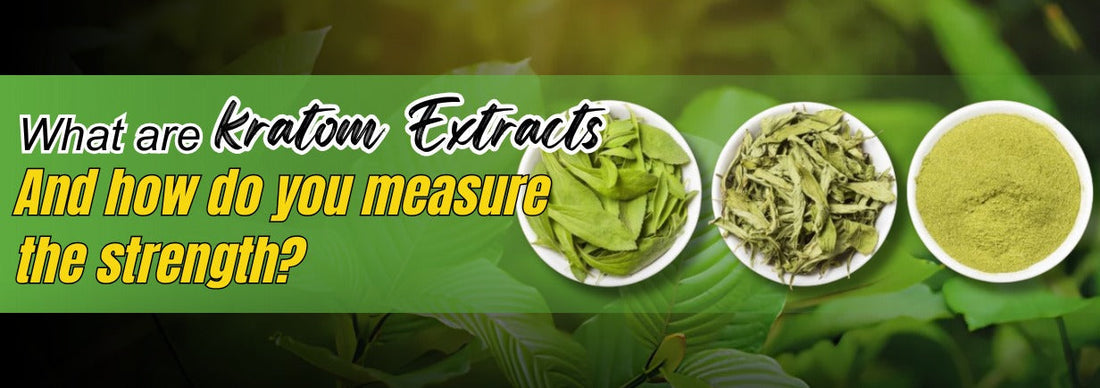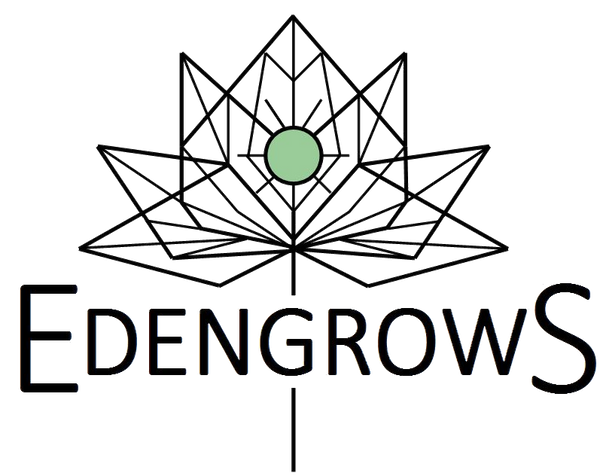
Mitragyna or Kratom is a tropical tree native to Southeast Asia, widely known for its relaxing and soothing properties. Over 15 million people in the United States reportedly use kratom for various wellness or therapeutic reasons. Among its most potent forms are kratom extracts, concentrated products made from the leaves and rich in alkaloids like mitragynine and 7-hydroxymitragynine. These extracts can be up to 50 times stronger than raw leaf powder, making potency a crucial consideration. Determining what’s truly in these products and their potency isn’t always straightforward.
This article breaks down what kratom extracts are and how to measure their strength.
What are kratom extracts?
Kratom extracts are highly concentrated forms of kratom made by isolating or enhancing its active alkaloids. Unlike raw leaf powder, which contains the full plant material, extracts undergo specialized processes to intensify strength and effects. Depending on the method used, a small amount of extract may deliver effects equivalent to 10–50 grams of regular powder.
These kratom extracts come in various forms like enhanced powders, tinctures, resins, and capsules. They are especially popular among experienced users seeking stronger or faster-acting effects. However, due to their strength, accurate dosing becomes far more critical compared to traditional kratom products.
The primary alkaloids that contribute to the strength of the extract
Kratom contains over 40 different alkaloids, but only a handful affect how strong it is. Knowing which ones matter most can help you get a better idea of how powerful an extract is and what kind of effects to expect.
Mitragynine
Mitragynine is the most abundant alkaloid in kratom, typically accounting for up to 66% of the total alkaloid content in dried leaves. In low doses (1–5 grams), mitragynine is known to produce stimulating effects, while in higher doses (5–15 grams), it becomes more sedative. Most commercial extracts measure their strength based on mitragynine concentration (e.g., 10%, 20%, or more by weight).
7-hydroxymitragynine (7-OH)
7-hydroxymitragynine is found in very small amounts, usually less than 0.05% of the kratom leaf, but it’s much stronger than other compounds. It binds more tightly to opioid receptors, and is mainly responsible for kratom’s calming, euphoric, and relieving effects. Many extract makers increase this alkaloid to make products more powerful, but too much can raise the risk of side effects or dependence.
Other trace alkaloids
- Speciogynine: muscle relaxant properties.
- Paynantheine: smooth muscle relaxant.
- Speciociliatine: binds to opioid receptors, modulates overall activity. Though individually weaker, these compounds can have synergistic effects that influence the body’s response to kratom extracts.
How are alkaloids extracted to increase strength?
Kratom extracts are produced through various extraction methods designed to concentrate the alkaloids found in kratom leaves. The result is a more potent product that requires much smaller doses than raw powder.
Water or alcohol-based extraction
This traditional method involves soaking powdered kratom leaves in hot water, ethanol, or another alcohol-based solvent. Over several hours, the alkaloids dissolve into the liquid. The mixture is then reduced to create a thick paste or resin. This process can yield 2x to 20x extracts, depending on concentration levels.
Solvent-based extraction (liquid–liquid extraction)
In scientific settings, liquid–liquid extraction is preferred for isolating mitragynine with precision. A polar and a nonpolar solvent are used to separate the alkaloids from plant material. This method offers better yield and purity compared to basic water or alcohol extraction.
Acid-base extraction
This more advanced technique manipulates the pH of the solution to first extract, then isolate alkaloids. Acids like vinegar or citric acid are added to pull alkaloids into solution. A base is then added to force them to precipitate out. The solid alkaloids are filtered and dried to create a highly concentrated powder or resin.
Heat-assisted methods
In some cases, heat is applied during or after the extraction process to accelerate solvent evaporation or improve alkaloid conversion, especially for boosting 7-hydroxymitragynine levels, which are not always present in large quantities in raw kratom.
3 ways to measure the strength of kratom extracts
Here are the four main ways to measure extract strength and how to read product labels the right way.
Ratio Labels (e.g., 10x, 20x)
Ratio labels are one of the most common but often misunderstood ways to measure exact strength. A label like "10x" means 10 grams of raw kratom were used to produce 1 gram of extract. However, this doesn’t tell you how many active alkaloids remain in the final product.
The ratio only shows how much plant material was used, not the actual potency. The final strength depends on how efficient the extraction was. For example:
- A 10x extract with 1% mitragynine may be weaker than a 5x extract with 25%.
- A poorly extracted 10x may have just 3% mitragynine, while a well-made 5x could have 20% or more.
Label tip: Don’t rely on ratio labels alone. They’re only useful when combined with alkaloid percentages.
Active Alkaloid Content (Mitragynine%, 7-OH%)
The most accurate way to measure the strength is by looking at the percentage of active alkaloids—mainly mitragynine and sometimes 7-hydroxymitragynine—listed on the label.
This tells you exactly how much of the active compound is present, typically shown as weight/weight percentage (w/w%). For example:
- 1 gram of extract with 40% mitragynine = 400 mg mitragynine
- 1 gram of extract with 10% mitragynine = 100 mg mitragynine
- The higher the percentage, the stronger the extract—regardless of the “x” label.
Lab Testing and Certificate of Analysis (CoA)
Reliable kratom extracts should include results from third-party lab testing, usually shown in a Certificate of Analysis (CoA). The most trusted method used is High-Performance Liquid Chromatography (HPLC).
HPLC testing precisely measures the levels of mitragynine, 7-hydroxymitragynine, and checks for contaminants like heavy metals, microbes, or solvents.
What to look for on a CoA:
- Percentages of mitragynine and 7-OH
- Date of testing
- Name of the testing lab
- Contaminant screening results
- Sometimes a QR code linking to lab results
Comparing kratom extract products
Not all kratom extracts are created equal. Products vary widely in concentration, form, and intended use, which can confuse both beginners and experienced users. A side-by-side comparison helps determine which product suits your needs while keeping safety and effectiveness in mind.
Liquid vs powder vs resin vs capsules
Liquid extracts
Usually sold in tincture bottles, these are alcohol- or glycerin-based solutions containing dissolved kratom alkaloids. Strength can range from 10 mg to 150 mg of mitragynine per mL. Liquids act quickly but are harder to dose precisely and often taste bitter.
Extract powders
Concentrated kratom in fine powder form. It may be added to beverages or blended with regular leaf powder. Potency depends on alkaloid percentage, ranging from 10% to 50% mitragynine. These offer flexible dosing but require careful measurement.
Resin or paste extracts
Thick, sticky substances are made by evaporating water or alcohol extracts. Typically stronger than powder, with slower onset and longer duration. They can contain 15x to 50x concentration, though labeling is inconsistent.
Capsules
Pre-measured doses of extract powder or resin. Convenient and taste-free, capsules usually contain 25 mg to 75 mg of mitragynine per capsule. These are ideal for precise dosing and travel use.
Pros and cons of each type
|
Form |
Pros |
Cons |
|
Liquid |
Fast-acting, easy to carry |
Harder to dose, bitter taste |
|
Powder |
Flexible, can be mixed |
Easy to overdose without a scale |
|
Resin |
Long-lasting, very strong |
Messy, hard to measure accurately |
|
Capsules |
Convenient, consistent dosing |
Slower onset, limited dose options |
Top 4 Kratom Myths & Misinformation About Kratom Extracts Strength
With kratom extracts growing in popularity, misinformation has spread about how they work and how strong they are. Misunderstanding exact strength can lead to overuse, disappointment, or harmful side effects. Let’s clear up the most common myths.
Higher ratio = stronger product
One of the most widespread myths is that a higher “x” ratio (e.g., 50x, 100x) always means a more powerful extract. In reality, the ratio only reflects the amount of raw leaf used, not the final concentration of active alkaloids. For example:
- A 25x extract could contain 10% mitragynine
- A 10x extract could contain 30% mitragynine and be three times stronger.
Fact: Always check alkaloid percentages—not just the ratio label.
All extracts work the same way
Another misconception is that all extracts offer similar effects. In truth, the alkaloid profile (especially the balance of mitragynine vs. 7-OH) greatly affects how each extract feels:
- More mitragynine = energizing, mood-lifting
- More 7-OH = sedating and soothing
- Two products with the same mitragynine percentage may feel different depending on how much 7-OH or other alkaloids they contain.
More strength = better product
Stronger isn’t always better. While a high-potency extract might seem appealing, it can also bring:
- Increased risk of tolerance and dependence
- Stronger side effects (e.g., nausea, discomfort)
Difficulty in dosing, especially for new users
Moderate-strength extracts (e.g., 10–25% mitragynine) often provide a better balance of effects, especially for regular or first-time users.
FAQs
How strong is kratom extract?
Kratom extracts are much stronger than regular powder. While plain leaf has 1–2% mitragynine, extracts can go up to 50%. Some are 5 to 20 times more potent, so smaller doses are needed.
How do you test for kratom alkaloids?
Labs use HPLC or mass spectrometry to measure alkaloids like mitragynine. Quality products come with third-party lab results, known as Certificates of Analysis, to confirm safety and strength.
What are the benefits of kratom extract?
Kratom extracts work more quickly and require smaller amounts. Many people use them to support physical comfort, boost mood, or enhance energy. They’re also convenient in liquid or capsule form, but should be used mindfully.
How long does a kratom extract high last?
Effects usually begin in 15–30 minutes and last 4–6 hours. The duration depends on dose, product strength, and personal tolerance. Stronger extracts may last longer but need caution.
Why do people use kratom extracts?
People use extracts for fast, powerful effects in smaller amounts. They’re helpful for those needing stronger relief or with higher tolerance. Many also prefer their ease of use.
